Demon Slayer inspires us to build an old-timey Japanese puzzle box of our own
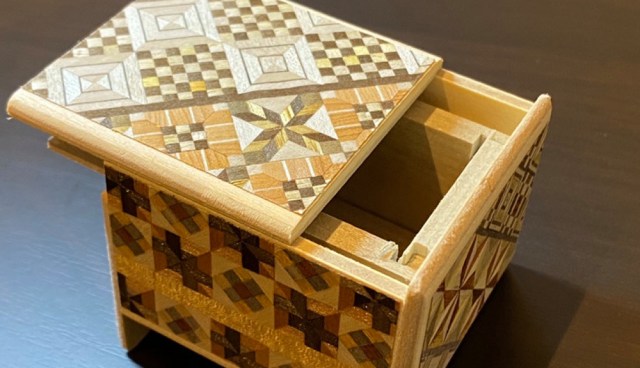
If you need a project with an anime Taisho-period twist, try crafting your own puzzle box!
Demon Slayer: Kimetsu no Yaiba has gripped anime fans worldwide with its hot-blooded cast and rich, historical setting. The protagonist, Tanjiro, travels through an alternate vision of Taisho-era Japan with his half-demon sister Nezuko, battling demons and proving his skills while searching for a way to turn Nezuko human again. Since the story has a historical setting (the Taisho period spanned from 1912 to 1926 and was a time of rapid industrialization and distinctive fashion) Demon Slayer makes great use of classic kimono designs, old-school instruments, and all manner of beautiful traditional toys.
Our Japanese-language reporter Saya Togashi took a break from lighting rainbow campfires to turn her attention to Demon Slayer, a series she had proudly boasted about ignoring. She fell in love at once and devoured not only the anime series and its accompanying box office smash-hit movie, but also the entire manga. She was especially fascinated by a puzzle box that popped up in an episode just before the events of the movie.
Puzzle boxes, also known as himitsubako or karakuri boxes, are beautifully made little storage boxes that need to be solved to open. So taken was Saya with these pretty little traditional boxes, that she ordered herself a kit to make one of her very own. Since the mountain hot spring town of Hakone, Kanagawa Prefecture is particularly famous for puzzle boxes, she opted for one from woodworking company Hakone Maruyama Bussan.
▼ The finished Hakone Maruyama Bussan Puzzle Box Experience Craft Kit (Small), priced 2,000 yen (US$19)
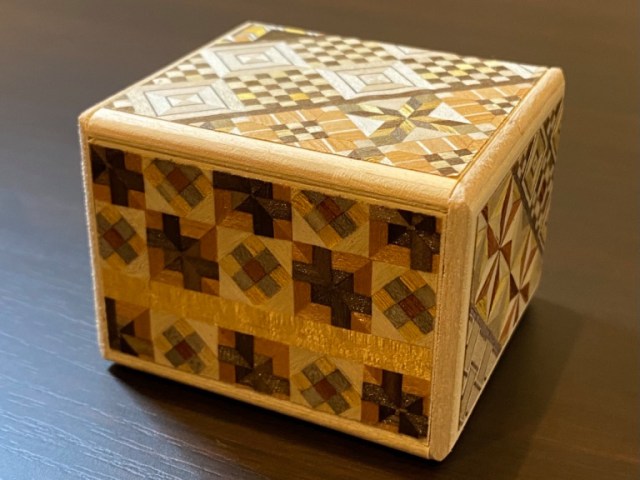
▼ Saya spreads out the components of the kit.
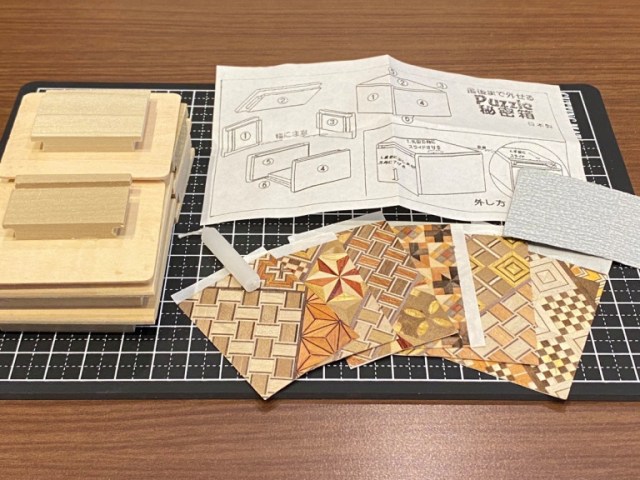
Hakone Maruyama Bussan has a wide variety of puzzle boxes. Some open relatively easily in four moves, while some are so complex that they require hundreds of minute, very specific movements. For this kit, there are six pieces in total, plus sheets of decorative patterned paneling.
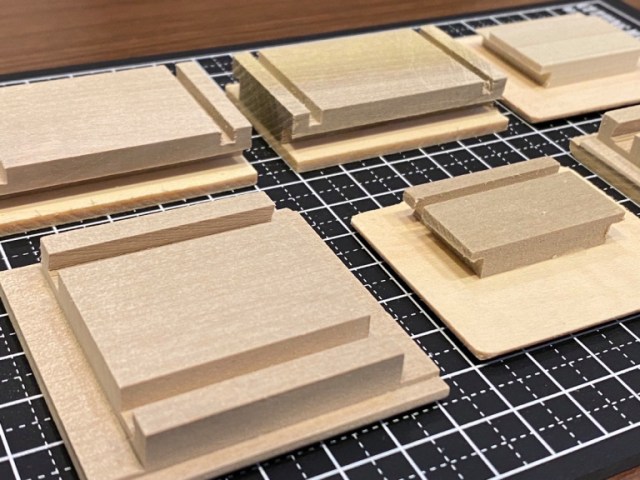
To give the box its shape, its constituent parts are slid tight into the scored grooves of other pieces. This style of woodworking means you don’t need to use nails or adhesive; friction between the pieces locks them into place.

The kit came with just one sheet of instructions, with numbered pictorial steps. Saya couldn’t imagine it would be too difficult to put together a cube, so she assembled them as best as she could…
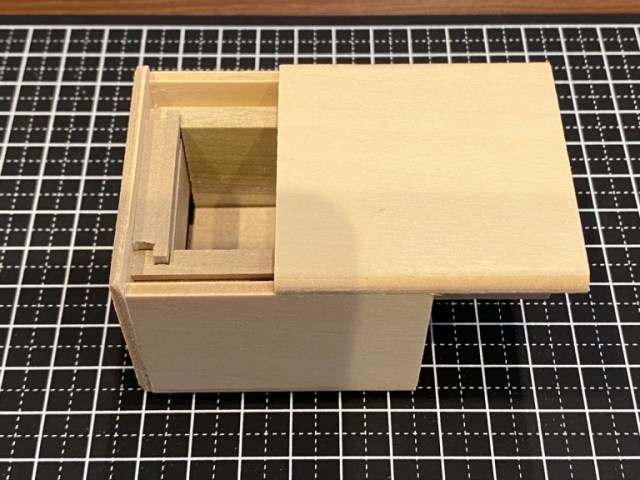
…and then attempted to close the box.
▼ Uh-oh!
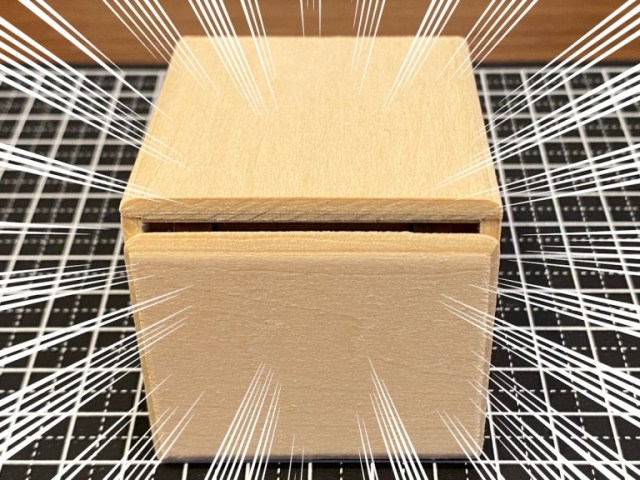
A small seam of space was left gaping open. With the sides failing to meet, it made a very sorry box, so Saya took it apart and started again.
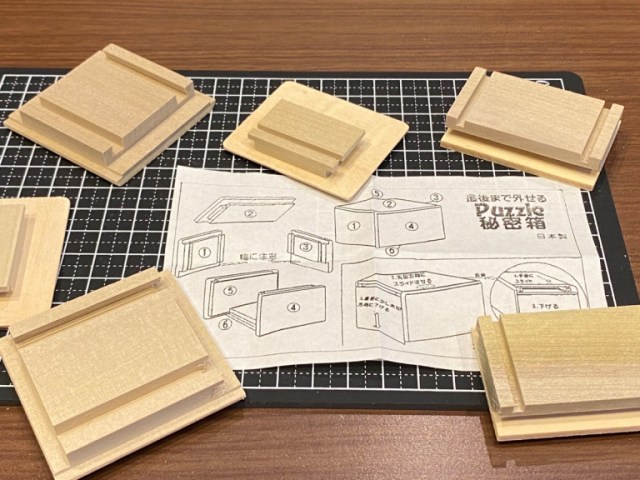
The problem was, Saya couldn’t really understand the instructions. The pictures representing the pieces didn’t map onto the real pieces especially well, and she had no idea which way to position them to start or whether they were facing inside-out. Thankfully, the one saving grace was in the lower right corner: “how to remove the lid”.
▼ As the box has no adhesive or nails, it can be undone and rebuilt to open it.
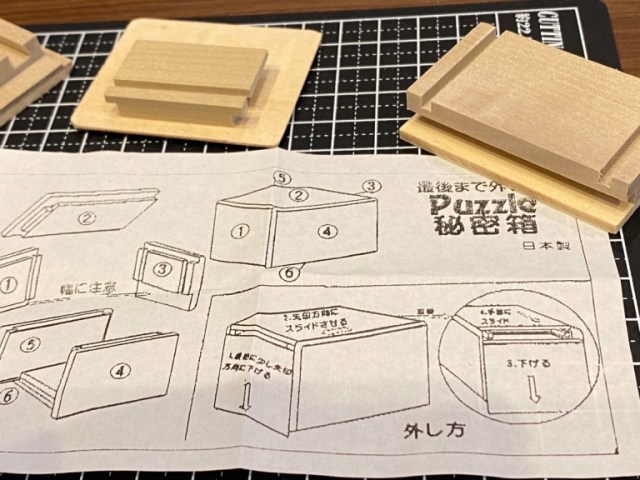
So she used the close-up illustration of the lid removal to identify those parts and worked the process out backward.
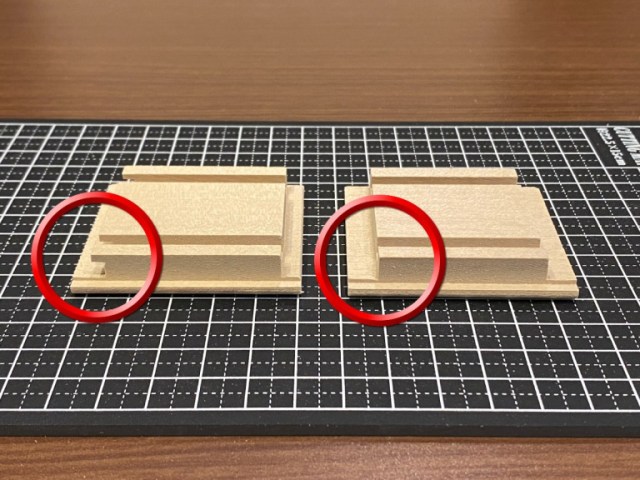
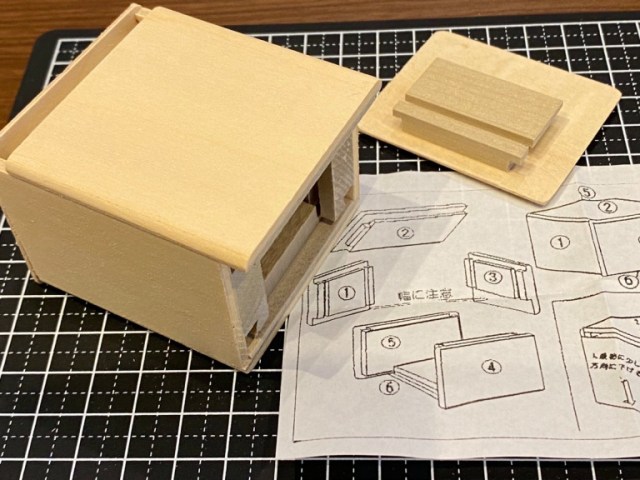
The final step — or the first, depending on your perspective — proved to be the most challenging. Saya wrestled with it for about 30 minutes, flipping it back and forth and trying to slide the piece in from all angles before it finally slid into place.
▼ After a brutal battle, comparable to any of Tanjiro’s…
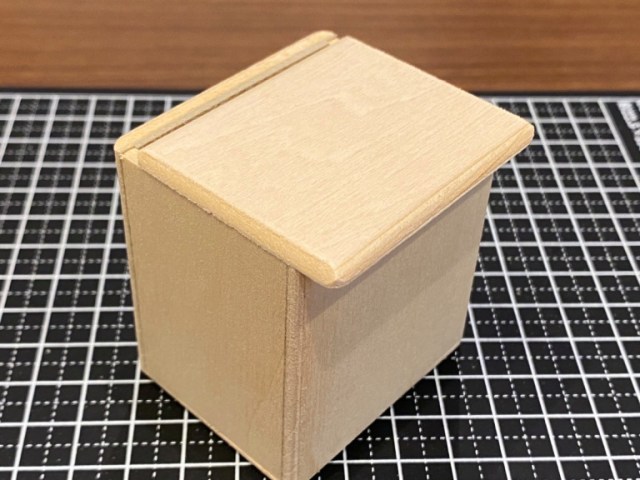
▼ …Saya’s puzzle box closed!
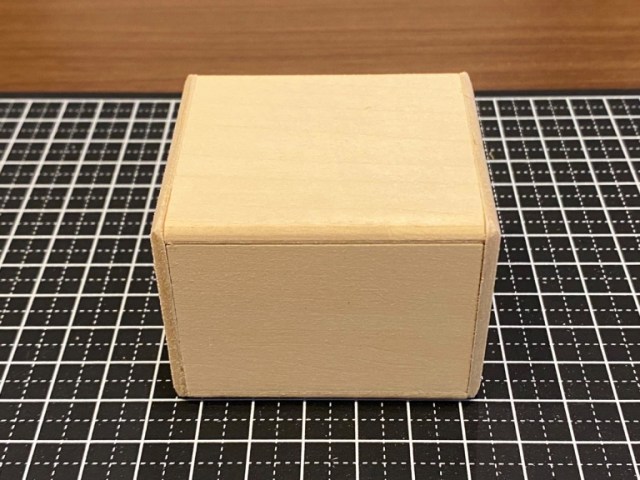
Putting this puzzle box together is no challenge for the faint-hearted. Re-fitting and re-arranging the puzzle pieces, sliding them into place, realizing they don’t fit correctly, and then starting all over again… Saya felt as though she’d had to persevere to the end to grasp the sweet, sweet victory of finishing the box. She admitted that she felt as though she had undergone a great trial, like the ones thrust upon shonen manga protagonists, to build up her capacity for patience.
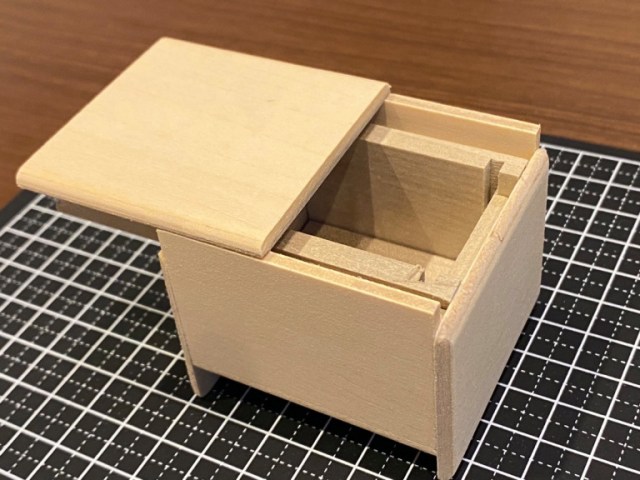
Saya doesn’t want to spoil the solution of how to open the completed puzzle box, but hints that it requires the steps “pull this bit, then shift that bit, then pull this part and then pull the piece out.” If someone just handed the box to you and asked you to open it, though, she doubts anyone would intuit how to open it without help.
Finally, the last step, and an incredibly important one had arrived: decoration!
▼ The kit’s wood paneling pieces have adhesive backings.
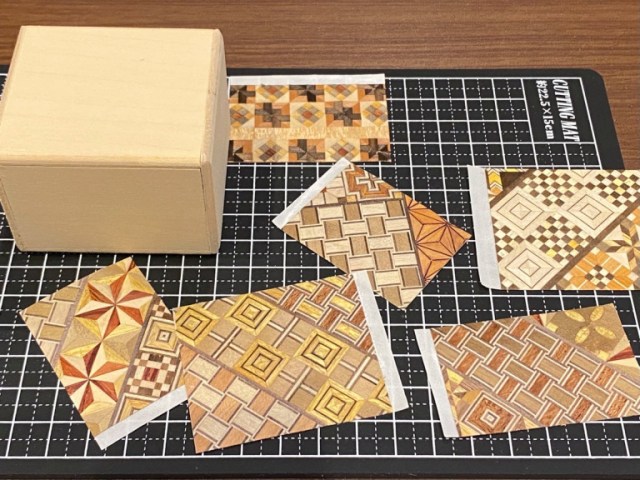
Once the paneling was affixed and gently buffed with wax to make it shine, the puzzle box was complete!
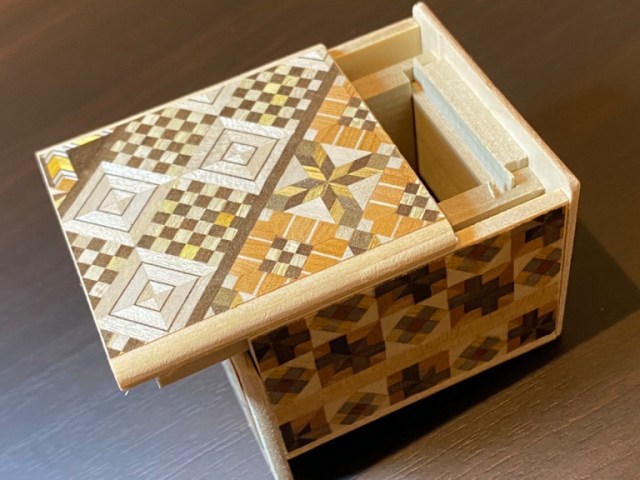
Saya admits that she may have run into more trouble putting the box together than the average person would, and in the end she was able to put it together using just the included directions. If you really need outside help, though, Hakone Maruyama Bussan offers assistance through Zoom video chat where they will walk you through the steps, so if you’re a fan of the Demon Slayer historical aesthetic or even just cool craft curios, you’ll want to nab a kit for yourself!
Related: Hakone Maruyama Bussan
Images © SoraNews24
● Want to hear about SoraNews24’s latest articles as soon as they’re published? Follow us on Facebook and Twitter!
Credit:

0 comments: